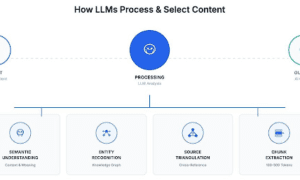Are you tired of watching your hard-earned money disappear before your eyes? Do you dream of a life where financial worries are a thing of the past? Well, look no further! In this blog post, we will unveil a step-by-step approach to cutting costs and saving money that is sure to revolutionize your finances. Whether you’re saving for a big purchase or looking to achieve long-term financial stability.
Introduction
In today’s fast-paced world, where consumerism and material possessions are constantly glorified, it can be challenging to cultivate a habit of saving. Many people overlook the value of saving money because they believe it restricts their ability to enjoy life or indulge in their wants and desires. However, the truth is quite the opposite: saving money can actually provide you with more opportunities to enjoy life in the long run.
There are various reasons why saving money should be an essential part of your financial plan. In this section, we will discuss some of the most compelling reasons why you need to prioritize saving money.
1. Emergency Fund:
Life is unpredictable, and unexpected events such as job loss, medical emergencies, or car repairs can occur at any time. Having a robust emergency fund can help you manage these unforeseen expenses without having to rely on credit cards or take out loans. Without savings set aside for emergencies, you may find yourself struggling financially when faced with an unexpected situation.
2. Financial Stability:
Saving money provides a sense of financial security and stability. It allows you to have a safety net during tough times, such as economic downturns or personal setbacks like illness or disability. Additionally, having savings also gives you peace of mind, knowing that you have a financial cushion to fall back on if needed.
3. Achieving Financial Goals:
Whether it’s buying a home, starting a business, or saving for retirement, having savings can help you achieve your long-term financial goals. By consistently putting money aside, you can build up the funds necessary to make significant purchases or investments in the future.
4. Retirement:
Saving money is crucial for planning your retirement. Many people underestimate the amount of money they will need to sustain their lifestyle after retirement and end up facing financial struggles in their golden years. By saving early and regularly, you can build a substantial retirement fund that will provide you with a comfortable lifestyle when you are no longer working.
5. Debt Management:
Having savings can also help you manage your debt more effectively. By having enough savings set aside, you can pay off existing debts without having to take on high-interest loans or credit card debt. This can save you from paying unnecessary interest charges and help improve your overall financial health.
6. Financial Independence:
Saving money allows you to become financially independent and not rely on others for financial support. It gives you the freedom to make choices based on what is best for your personal and financial situation, rather than being limited by your finances.
Step-by-Step Approach to Saving Money
Step 1: Assess Your Current Expenses and Budget
Before you can start cutting costs, it’s important to understand where your money is going. This means taking a close look at your current expenses and creating a budget to track your spending.
1. Make a list of all your expenses.
The first step in assessing your current expenses is to make a comprehensive list of everything you spend money on. This includes fixed monthly bills such as rent or mortgage, utilities, insurance, and loan payments, as well as variable expenses like groceries, entertainment, and transportation.
2. Track your spending for one month.
To get an accurate understanding of where your money is going, it’s important to track your spending for at least one month. This means keeping track of every purchase you make, no matter how small, whether it’s with cash or a card.
3. Categorize your expenses.
Once you have tracked your spending for a month, categorize each expense into different categories, such as housing, food, transportation, entertainment, etc. This will give you a clearer picture of which areas are eating up most of your budget.
4. Calculate total expenditures.
Now that you have categorized all the expenses from the past month, add them up to calculate the total amount spent in each category and the overall expenditure for the month.
Step 2: Identify areas to cut costs.
After taking a thorough look at your budget and understanding your spending habits, the next step in cutting costs is to identify specific areas where you can save money. This involves closely examining your expenses and making strategic decisions about where to cut back.
1. Track your expenses
The first step in identifying areas to cut costs is to track your expenses for a month or two. This will give you a clear understanding of where your money is going and how much you are spending in each category. You can use budgeting apps or simply keep track of receipts and bank statements. Categorize your expenses into fixed (such as rent, utilities, and insurance) and variable (such as groceries, dining out, and entertainment).
2. Prioritize Your Spending Categories
Once you have tracked all your expenses, take some time to analyze them and determine which categories are essential and which ones are more flexible. Essential categories include housing, transportation, food, healthcare, and debt payments, while flexible categories may include entertainment, shopping, dining out, etc.
3. Evaluate Your Fixed Expenses
Fixed expenses are typically the largest portion of our budgets and therefore offer the most potential for cost-cutting. Start by reviewing these expenses carefully. Can you negotiate lower rates for services such as cable or internet? Are there any subscription services you no longer need? Can you switch to a cheaper cell phone plan? Even small reductions in these fixed expenses can add up over time.
Step 3: Create a realistic savings goal.
Once you have evaluated your spending habits and identified areas where you can cut costs, it’s time to set a realistic savings goal. This will serve as a target for your saving efforts and give you something to work towards. Without a clear goal in mind, it can be easy to lose motivation and fall back into old spending patterns.
Here are some steps to follow when creating your savings goal:
1. Determine the Purpose of Your Savings: Before setting a specific amount, think about why you want to save money in the first place. Do you have a specific financial goal, such as buying a house or paying off debt? Are you saving for retirement or an emergency fund? Understanding the purpose behind your savings will help guide your decision-making process.
2. Assess Your Current Financial Situation: Take stock of how much money is coming in each month and how much is going out. This will give you an idea of how much disposable income you have available for saving. It’s important to be realistic about this number and not overestimate it.
3. Consider Your Time Frame: How long do you want to take to reach your savings goal? If it’s a short-term goal, like saving for a vacation, then you may need to save more aggressively compared to a longer-term goal, like retirement planning.
Step 4: Implement money-saving strategies (e.g., meal planning, negotiating bills).
Now that you have a budget in place and have identified areas where you can cut costs, it’s time to take action and implement some money-saving strategies. This step will require some effort and discipline on your part, but the potential savings can make a significant impact on your overall financial situation.
1. Meal Planning:
One of the biggest expenses for most households is food. By planning your meals ahead of time, you can save both time and money. Start by making a list of all the meals you plan to eat for the week. Then create a shopping list based on those meals and stick to it when grocery shopping. This will help prevent impulse purchases and ensure that you only buy what you need.
2. Negotiating bills:
Many people overlook this simple strategy, but negotiating bills can result in significant savings each month. Start by calling your service providers, such as cable or internet companies or cell phone carriers, and asking about any discounts or promotions that may be available to you.
Step 5: Find Ways to Increase Income (e.g., Side Hustles, Freelancing)
While cutting costs is an effective way to save money, it can only take you so far. To truly boost your savings, you may need to find ways to increase your income. This can be done through side hustles or freelancing opportunities.
Side hustles are any type of work that you do in addition to your main job. These can range from selling items on online marketplaces like eBay or Etsy, offering services such as pet-sitting or housecleaning, or even participating in paid surveys and focus groups. The key is finding something that aligns with your skills and interests, so it doesn’t feel like a burden but rather a fun and rewarding way to make extra money.
Freelancing, on the other hand, involves using your professional skills and expertise to offer services to clients on a project basis. This could include writing, graphic design, social media management, web development, consulting, and many more. Websites like Upwork and Fiverr make it easy for freelancers to connect with potential clients from all over the world.
Step 6: Track your progress and adjust as needed.
Once you have implemented all the previous steps, it is important to regularly track your progress and make adjustments as needed. This will help you stay on track with your financial goals and make sure that you are continuously saving money.
1. Set a Timeframe: The first step in tracking your progress is to set a timeframe for yourself. This could be weekly, biweekly, or monthly, depending on your preference. Having a specific timeframe will help you stay organized and focused on your goal.
2. Create a Budget: When tracking your progress, it is essential to have a clear understanding of where your money is going. Creating a budget can help you keep track of your expenses and identify areas where you may need to cut back further.
3. Monitor Your Spending: Keep an eye on how much you are spending each week or month compared to what was budgeted. If you notice that you are consistently overspending in certain categories, it may be time to reevaluate those expenses and find ways to reduce them.
4. Use Tracking Tools: There are many tools available online or through mobile apps that can help you track your spending and savings progress easily. Some popular options include Mint, Personal Capital, and YNAB (You Need a Budget).
5. Review Bills Regularly: Make it a habit to review all of your bills when they come in each month. This will ensure that there are no unexpected charges or fees and also give you an opportunity to negotiate lower rates if possible.
Conclusion
Saving money is an important aspect of personal finance and can greatly benefit individuals in the long run. It is essential to remember that saving money does not mean sacrificing one’s quality of life. It simply means being more mindful of our spending habits and finding ways to be more efficient with our money. This could include shopping around for better deals, using coupons or discounts, or even finding ways to earn extra income.



































